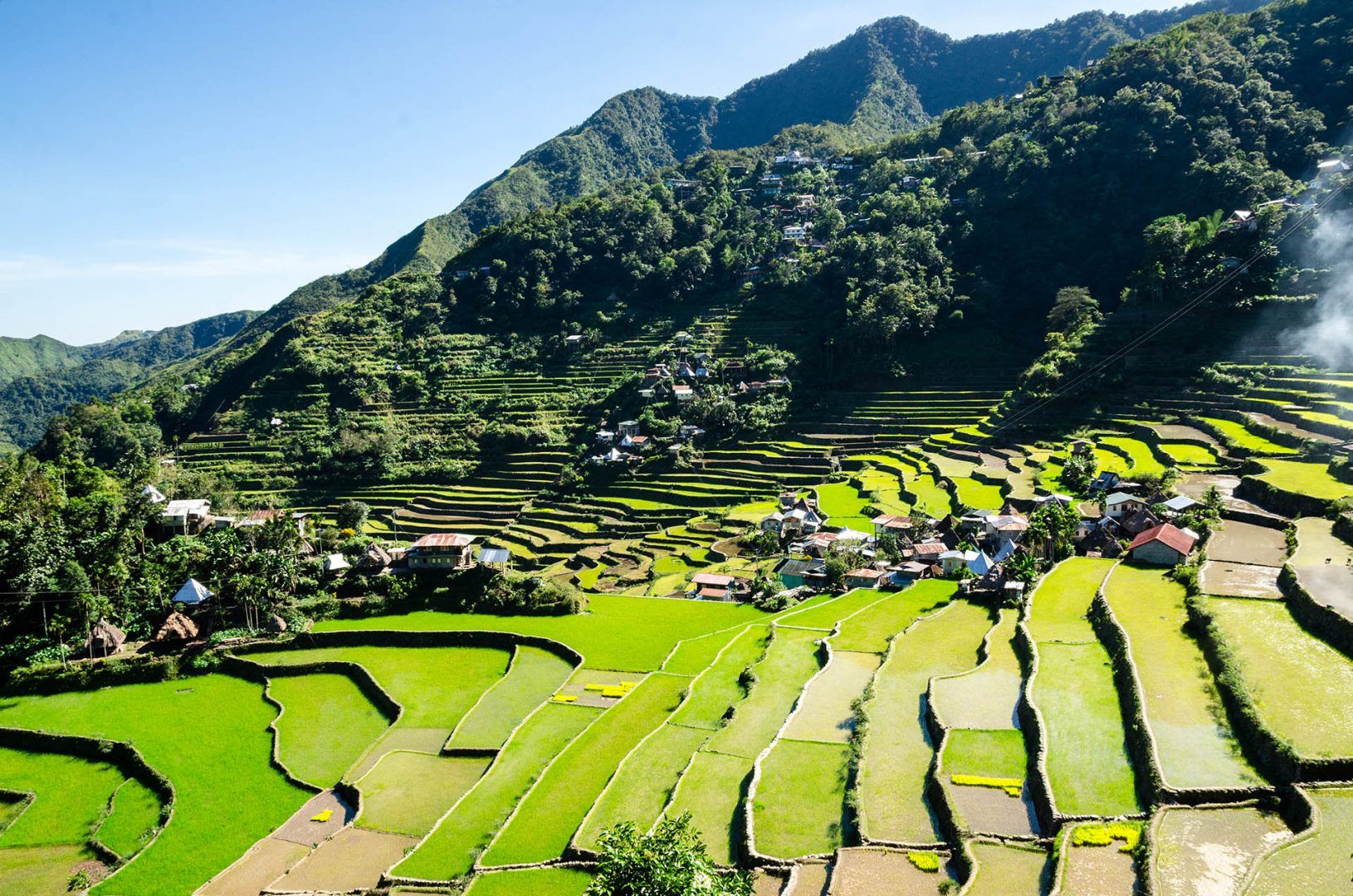The average Filipino consumes over 120kg of rice a year. Commercial rice, as it is known up in the Cordilleras, is grown in mass quantities in the lowlands with the use of fertilisers, and is exported mainly abroad.
“Remember that there are bad harvests, too – when the rice we grow here is not enough we end up buying commercial rice from the low lands”, Elvis goes on to tell me. It is therefore very rare that an Ifugao family has excess rice to sell.
For Ifugao farmers, the terraces are the only source of income. With a daily wage of less than US$6, increasing numbers of young Filipinos have, in recent years, migrated to urban areas and renounced fieldwork. As a result, a number of rice terraces have been abandoned and are rapidly deteriorating. The situation reached such a worrisome degree that the terraces were placed on the list of World Heritage in Danger in 2001.
But Elvis tells me the situation is now improving: “In the last few years I have seen most of the abandoned paddies being revived. I’d say over 90% are being used at the moment.”
As the price of a sack of rice (50kg) now stands at US$45, a four-fold increase from the mid 1990s, the paddies are slowly being tended for again, with youngsters returning to their home province to work with their families.
In the last decade, programmes have been put in place by the local government to conserve this living natural landscape, and in 2012 the terraces were successfully removed from the Danger List. Yet, the area continues to face new challenges. Climate change and powerful earthquakes have caused dams to move, thereby re-routing water systems and affecting the hydraulic system of the terraces. The Ifugao must overcome these challenges in order for the terraces to function as a balanced whole, with sustainable tourism proving to be one of the answers.
An elderly lady stoops in a field, a scarlet shawl wrapped around her head to protect her from the sun’s scorching rays. In the neighbouring terrace, a lean fellow stands knee deep in a viscous layer of mud, his coarse hands tightly wrapped around a wooden shovel. He is levelling the field for the upcoming planting season. This time of year – November and December – is commonly referred to as “mirror time” after the paddies’ glassy appearance as they lie covered in a layer of water.
Other months bring an array of different colours: “Planting time is in the middle of January, until about the middle of February. Then the rice needs a bit of time to stabilise. Around April the terraces are at their greenest, in June and July, during harvest time, they become yellow, and in August they are golden with ripe grain, and then brown.”
I try to picture the terraces in their different stages, morphing into a rainbow of hues throughout the year, and remember how much these 70-degree slopes have shaped the lives of the people around them. I look across the mountainside to a small hamlet that comfortably nestles within the terraces, a tapestry of harmony between humankind and nature that is truly a sight to behold.

